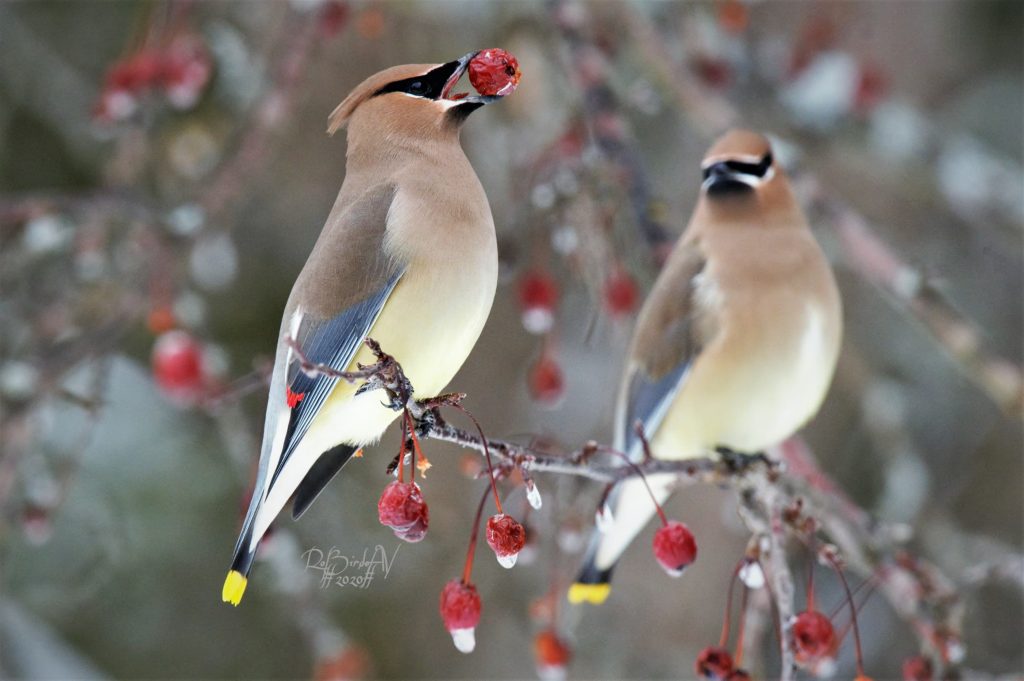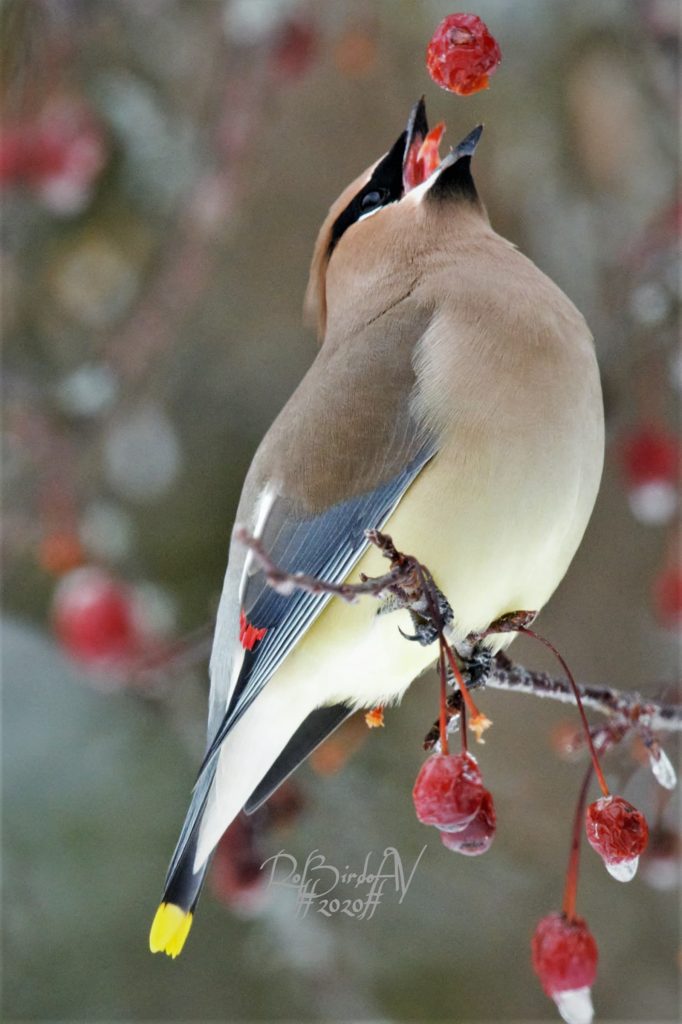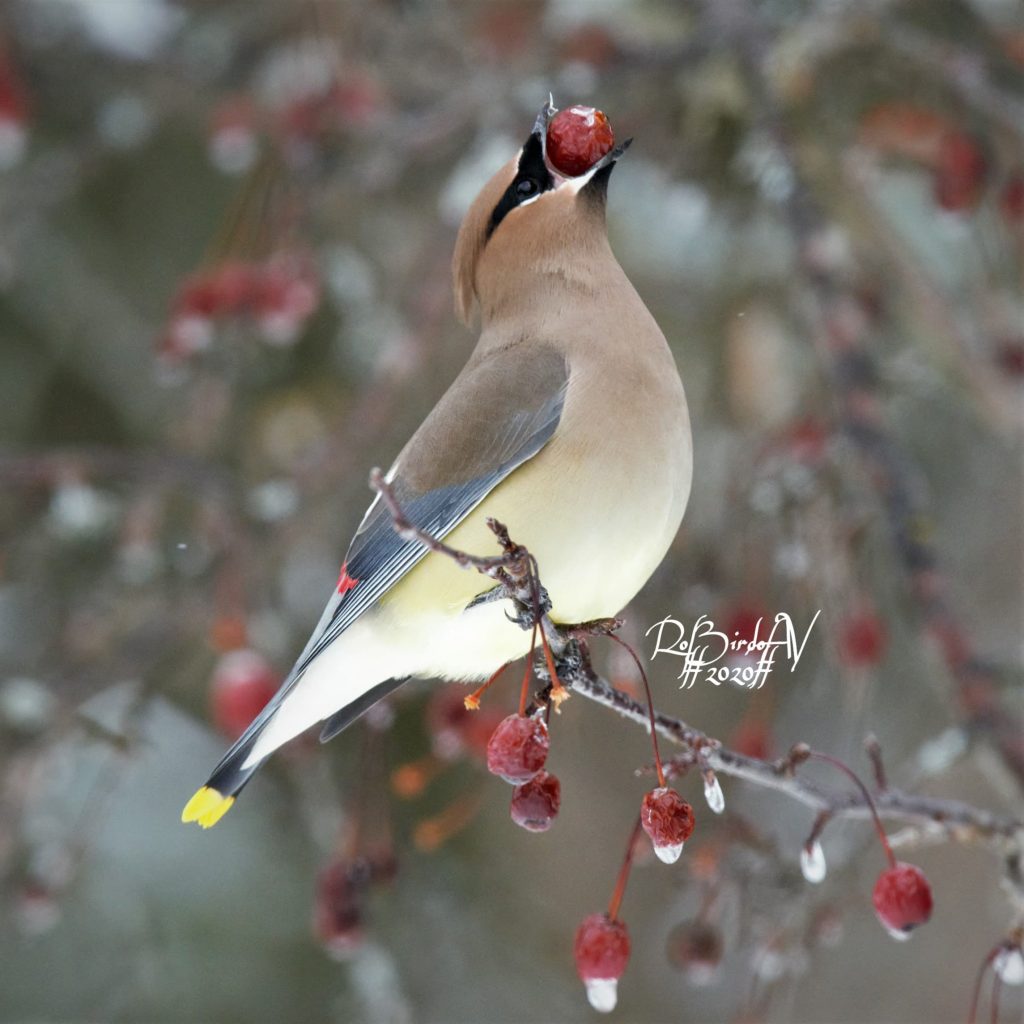Cedar Waxwings – An Introduction
How fabulous-looking are Cedar Waxwings? The plumage appears soft and perfectly groomed. The facial mask is so striking. The wings have tips that appear as if they have been dipped in bright red wax. The bird has an elegant look, its tail edged in yellow, its head topped with a feathery crest. Winter is a great time to look for these birds as they eat fruit. You’ll find them travelling in flocks, often congregating near trees with berries.
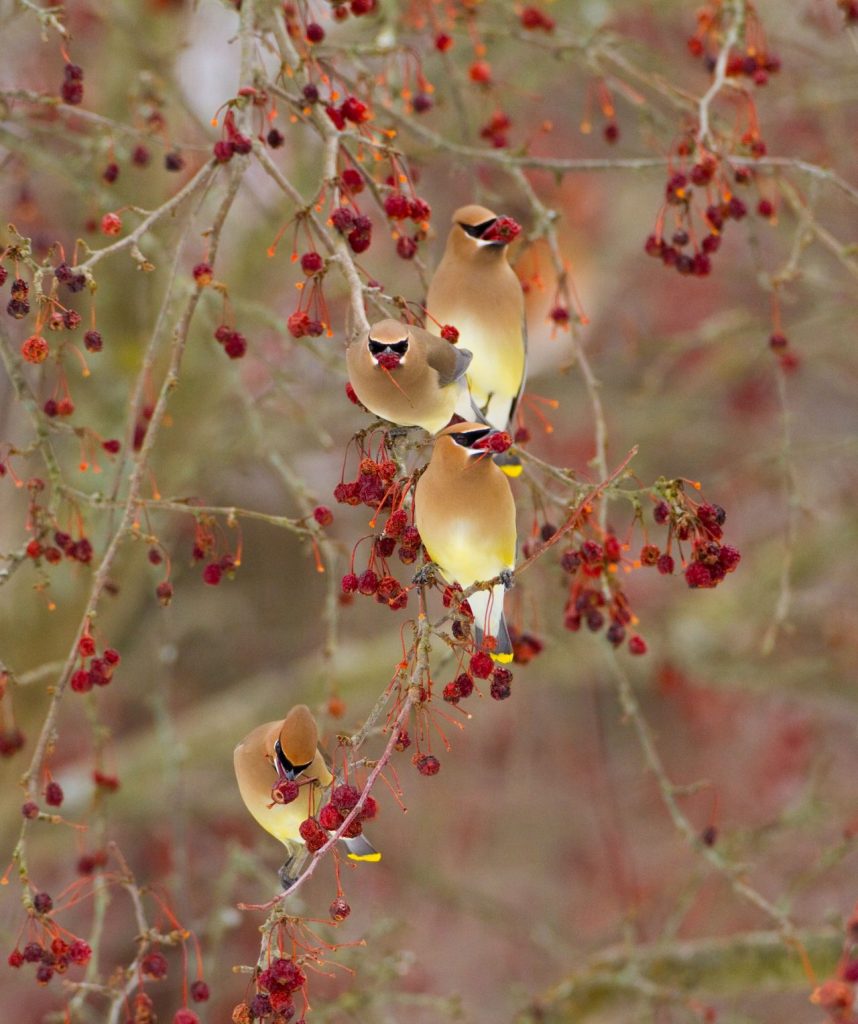
My most recent experience with Cedar Waxwings was at Ira Township Park in New Baltimore. A group of 45 of them attracted my attention, sitting in the sunshine at the tops of trees. They flew down a few at a time to an area behind tangled vines where a creek could be accessed. Daintily dipping their beaks, some drank from the running stream while others stood sentinel above. Such a peaceful sight made the winter walk so rewarding.
Cedar Waxwings are known to pass fruit back and forth. This can be a courtship ritual or bonding between a mated pair. Many times it is not just one bird that passes the fruit. Rather, two birds may pass back and forth until one bird finally eats the berry, typically the female.
On a Personal Note…
The Cedar Waxwing was a prominent bird in the book “Mystery on Mackinaw Island”. The librarian in this story had a stuffed Cedar Waxwing and used it as a signal to let the main character, a young boy, know she needed to see him. The dead bird had been found by him outside of the library when he was nine years old and he gave it to her. The book was a page turner for me – how couldn’t I love a book where the main character aspired to become “a real Bird Man”.
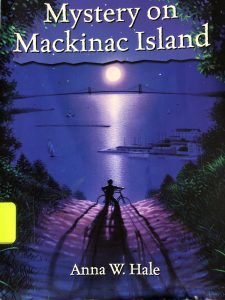
The book came to my attention when I spoke with Kathy Schmitz, a teacher at Kerby Elementary School in Grosse Pointe Farms. Her class was reading the book and she discovered the Cedar Waxwing was our bird of the month for our coloring contest! I look forward to seeing the masterpieces from these children. I hope they feel more deeply connected to the story and the main character as a result of this artistic enterprise.
Thinking Bigger
What can you do to become more engaged and attuned to Cedar Waxwings? Give serious consideration to planting fruiting trees for these beauties. They can subsist for months on a diet of fruit alone. Cornell Laboratory suggests juniper, mountain ash, crabapple and hawthorn as well as their namesake cedars for winter fruit. In summer, serviceberry, strawberry, mulberry, raspberries and dogwoods all provide a good food source. Envision your yard as a place to welcome these lovelies, as you make your planting plans. Get outside and search for berries, and you may be rewarded with some sights similar to these fabulous photographs, compliments of Roberto Viguilla and Marie Read.
